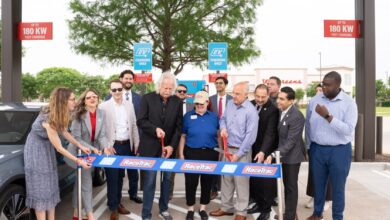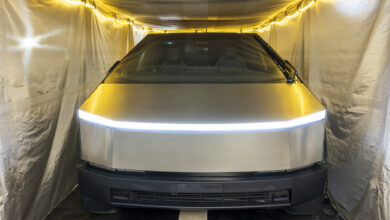Enhancements in Electric Vehicle Charging Experience on the Horizon

Amidst the growing adoption of electric vehicles (EVs) in the United States, significant progress has been made to improve the public charging infrastructure. By standardizing connectors and adopting more robust communication protocols, the experience is set to become far more user-friendly for EV drivers.
The newly established North American Charging Standard (NACS) connector, catalyzed by Ford’s adoption announcement for future EVs and subsequent alignment by prominent automakers and charging networks, promises near-universal compatibility. In tandem, SAE International’s expedited process for standardization, marked by the introduction of the “J3400” NACS connector, heralds the end of the connector disparity era, simplifying the EV charging ecosystem substantially.
Alongside hardware uniformity, there’s a concerted effort to address software integration issues, critical for a seamless EV charging experience. Federal programs like NEVI mandate cutting-edge communication standards like OCPP, OCPI, and ISO 15118 to minimize errors, streamline payments, and introduce plug-and-charge capabilities. Moreover, the federal funding is tied to operational reliability, ensuring a minimum 97% uptime for publicly funded chargers.
With the ongoing collaboration between the federal government and industry players, the future bodes well for cost-effective, reliable, and convenient EV charging solutions, inching closer to replicating the intuitiveness of traditional fueling.
Summary: Electric vehicle charging in the U.S. is set to become more streamlined and user-friendly thanks to industry-wide adoption of a universal connector and improved communication standards. Through efforts such as Ford’s adoption of the North American Charging Standard (NACS) and the National Electric Vehicle Infrastructure (NEVI) program’s requirements for standardized protocols and reliable operations, EV owners can anticipate easier, more efficient charging experiences.
Industry Overview
The electric vehicle (EV) charging industry has witnessed rapid growth parallel to the adoption of electric vehicles. As consumers become more environmentally conscious and governments push for lower emissions, the demand for EVs has surged, propelling the need for extensive and reliable charging infrastructure.
Market Forecasts
Industry analysts project considerable expansion in the EV charging station market. With EV sales anticipated to rise significantly over the next decade, investments in charging infrastructure are expected to follow suit. By some estimates, the global EV charging station market could exceed a multi-billion dollar valuation by the late 2020s, bolstered by supportive policies, technological advancements, and reductions in the cost of EV technology.
Issues in the Industry
Despite the growth, challenges persist. One major concern has been the inconsistency in charging connectors, which the NACS aims to resolve. Additionally, charging station reliability, the rate of infrastructure rollout versus the adoption rate of EVs, and the need for a more extensive fast-charging network are issues that the industry continues to work on. For EV owners, the ease of finding and using public charging stations remains a priority, an aspect that is gradually improving with the use of robust communication standards like OCPP, OCPI, and ISO 15118.
Further complexities include the grid’s ability to cope with the increased demand linked to EV charging, ensuring sufficient power generation, and the legislation around the installation of public and home charging stations. Practical issues, such as the time it takes to charge an EV compared to fueling a conventional vehicle, also affect customer perceptions and adoption rates.
To join the conversation, find related insights, or read about the latest developments in electric vehicles and their supporting infrastructure, you can refer to leading industry information sources:
– For advancements in automotive technology including electric vehicles, visit SAE International.
– For news and analytics focused on the global EV market, turn to BloombergNEF.
– To explore the growing landscape of alternative energy and EVs, see GreenTech Media.
The alignment in the EV industry towards standardized charging is a critical step in facilitating a transition to a cleaner, electrically powered automotive landscape. It not only makes the technology more accessible to consumers but also represents a coordinated effort by various stakeholders to address the environmental impact of transportation. Such advancements in infrastructure are key to ensuring the longevity and success of EV adoption, enabling a more sustainable future for mobility.

Iwona Majkowska is a prominent figure in the tech industry, renowned for her expertise in new technologies, artificial intelligence, and solid-state batteries. Her work, often at the forefront of innovation, provides critical insights into the development and application of cutting-edge AI solutions and the evolution of energy storage technologies. Majkowska’s contributions are pivotal in shaping the future of sustainable energy and intelligent systems, making her a respected voice in both academic and industrial circles. Her articles and research papers are a valuable resource for professionals and enthusiasts alike, seeking to understand the impact and potential of these transformative technologies.



